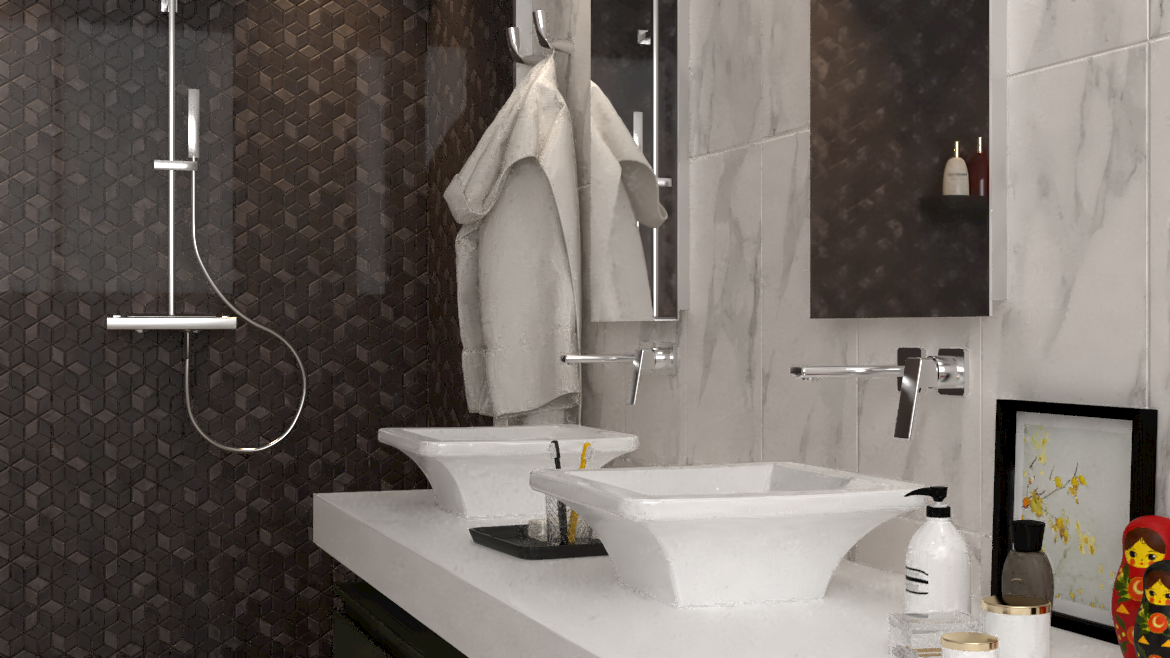DomuS3D® 2017 integrates the new version of the rendering engine: V-Ray®, v. 3.40
In this page you can find useful details related to the Mode and Quality you can choose prior launching the rendeirng process.
One of the most important sections of the rendering mask is the Mode selecttor. V-Ray® 3.40 allows, in fact, to use 3 different modes: Interactive, Progressive or Customized.
Interactive: you render the scene in Interactive mode when you can assist directly to the rendering process from within the Application. In this way, you can stop the process whenever you want in case the quality level is enough (or if you want to make modifications to the scene prior rendering it again). In Interactive Mode you can always check the difference between the Standard and the Denoised image: the Denoised image is generated by the render engine starting from the Standard one, using a powerful algorithm that tries to remove noise effects. Denoised image is generated at regular intervals (usually every 2-3 minutes, when a new rendering loop has concluded). You can switch from the Standard to the Denoised image, and vice-versa, using the upper-left control in the rendering mask. We suggest you to use Interactive Mode when you render directly inside the Application.
Progressive: you can use Progressive mode when you don't need to supervise the process. In this case you can specify the Quality level you want to reach, and/or a time limit for the process. At the end of the time limit, the Application will save both Standard and Denoised image (Denoising consists of a noise reduction process, and the image will appear more sharp and crisp for the human eye). Denoising algorithms availability allows, in most of the scenes, to reduce the time needed for the rendering, still getting the needed level of Quality. We suggest you to use Progressive mode if you are willing to send rendering processes (also called Jobs) to the external, dedicated application called Render Manager (Render Manager can operate on the same computer of the Application, rather than a dedicated Rendering Server; in this way you can keep on designing with your DomuS3D®).
Customized: you use the third available mode, called Customized, when you load a project made with a previous version of the Program, or when you want to interact with the engine parameters. In this case Application will show you an advanced control panel, where you can set each rendering parameter involved in the rendering process (we suggest you to use this rendering mode just in case you are an expert of V-Ray and you know the parameters you're going to adjust-Parameters name is the same of well known rendering applications, such as AutodeskTM 3ds Max, so there is plenty of documentation available if you want to become an expert). If you want to render an old project with the new engine, set Mode to Interactive, and click, the button Restore factory parameters.
The Comparison Tool available in this section allows you to compare different levels of quality: select the quality level for the left and right section, then move the splitter in order to note differences between the selected levels.

